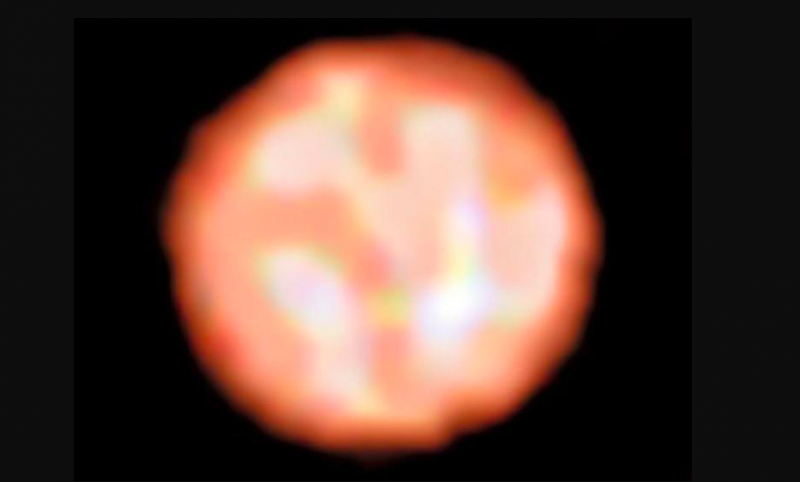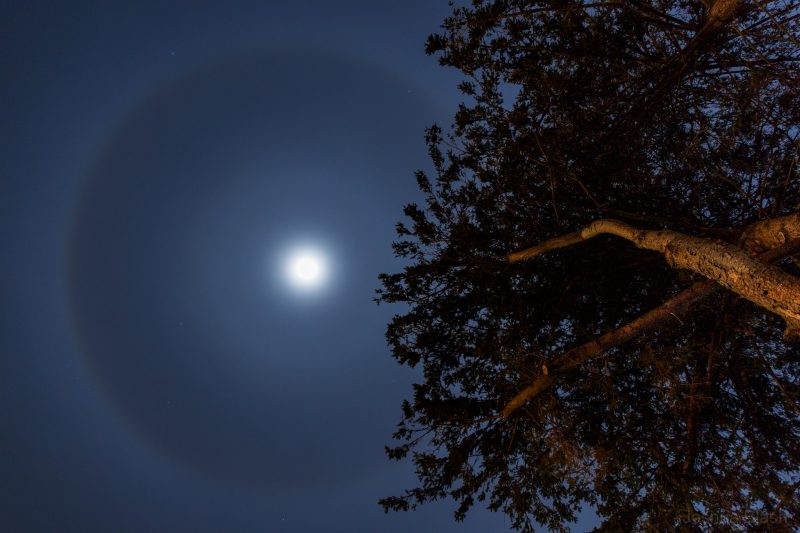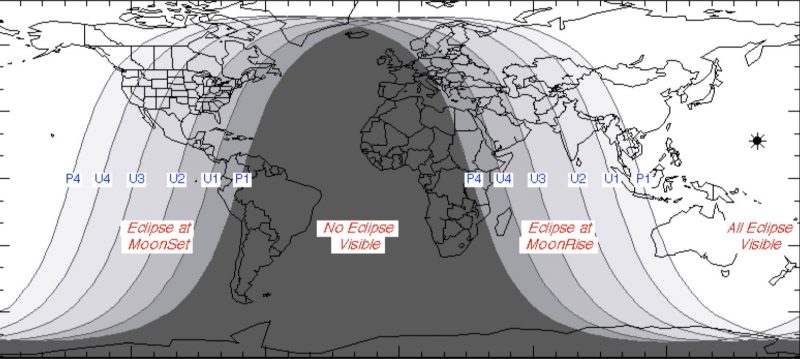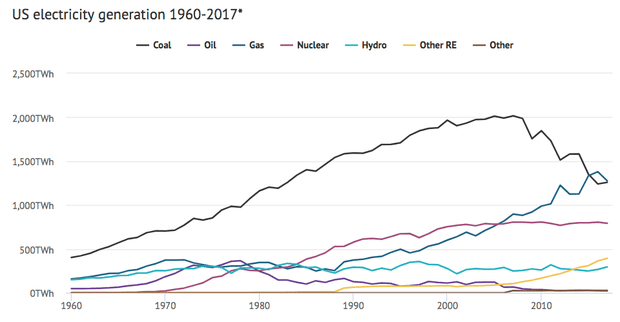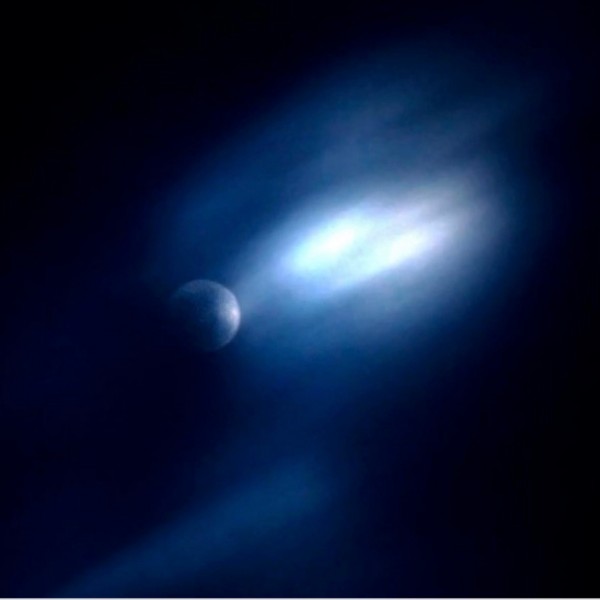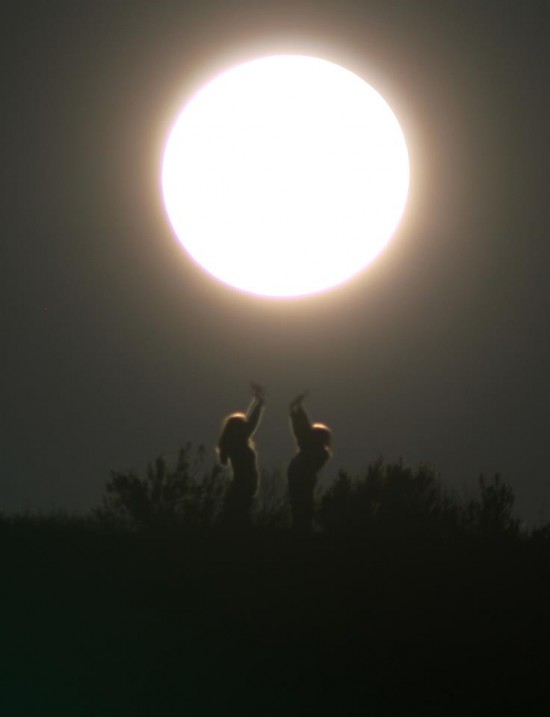
Total lunar eclipse photo, above, taken in 2004 by Fred Espenak
The Blue Moon – second of two full moons in one calendar month – will pass through the Earth’s shadow on January 31, 2018, to give us a total lunar eclipse. Totality, when the moon will be entirely inside the Earth’s dark umbral shadow, will last a bit more than one-and-a-quarter hours. The January 31 full moon is also the third in a series of three straight full moon supermoons – that is, super-close full moons. It’s the first of two Blue Moons in 2018. So it’s not just a total lunar eclipse, or a Blue Moon, or a supermoon. It’s all three … a super Blue Moon total eclipse!
Is it the first Blue Moon total eclipse in 150 years, as some social media memes are now claiming? It is … if you’re not considering the whole world, but only the Americas. More about that below.
How about supermoon total lunar eclipses? The last supermoon total lunar eclipse was in September 2015. And the last super Blue Moon total eclipse happened on December 30, 1982.
IMPORTANT. If you live in North America or the Hawaiian Islands, this lunar eclipse will be visible in your sky before sunrise on January 31.
On the other hand, if you live in the Middle East, Asia, Indonesia, Australia or New Zealand, this lunar eclipse will happen in the evening hours after sunset on January 31.
Follow the links below to learn eclipse times and more:
Eclipse times in Universal Time
Eclipse times for North American time zones
Eclipse calculators provide eclipse times for your sky
First Blue Moon total eclipse in 150 years? Well…
Who will see a partial lunar eclipse?
What causes a lunar eclipse?
January 31 is 1st of two Blue Moons in 2018
Eclipse times in Universal Time
Partial umbral eclipse begins: 11:48 Universal Time (UT)
Total eclipse begins: 12:52 UT
Greatest eclipse: 13:30 UT
Total eclipse ends: 14:08 UT
Partial umbral eclipse ends: 15:11 UT
How do I translate Universal Time to my time?
Eclipse times for North American time zones:
Eastern Standard Time (January 31, 2018)
Partial umbral eclipse begins: 6:48 a.m. EST
Moon sets before start of total eclipse
Central Standard Time (January 31, 2018)
Partial umbral eclipse begins: 5:48 a.m. CST
Total eclipse begins: 6:52 a.m. CST
Moon may set before totality ends
Mountain Standard Time (January 31, 2018)
Partial umbral eclipse begins: 4:48 a.m. MST
Total eclipse begins: 5:52 a.m. MST
Greatest eclipse: 6:30 a.m. MST
Total eclipse ends: 7:08 a.m. MST
Moon sets before end of partial umbral eclipse
Pacific Standard Time (January 31, 2018)
Partial umbral eclipse begins: 3:48 a.m. PST
Total eclipse begins: 4:52 a.m. PST
Greatest eclipse: 5:30 a.m. PST
Total eclipse ends: 6:08 a.m. PST
Partial umbral eclipse ends: 7:11 a.m. PST
Moon may set before end of partial umbral eclipse
Alaskan Standard Time (January 31, 2018)
Partial umbral eclipse begins: 2:48 a.m. AKST
Total eclipse begins: 3:52 a.m. AKST
Greatest eclipse: 4:30 a.m. AKST
Total eclipse ends: 5:08 a.m. AKST
Partial umbral eclipse ends: 6:11 a.m. AKST
Hawaii-Aleutian Standard Time (January 31, 2018)
Partial umbral eclipse begins: 1:48 a.m. HAST
Total eclipse begins: 2:52 a.m. HAST
Greatest eclipse: 3:30 a.m. HAST
Total eclipse ends: 4:08 a.m. HAST
Partial umbral eclipse ends: 5:11 a.m. HAST
Eclipse calculators provide eclipse times for your sky.
Remember … you have to be on the night side of Earth while the lunar eclipse is taking place to witness this great natural phenomenon. Of course, people around the globe want to know whether the eclipse is visible from their part of the world and at what time. To find out the local time of the greatest eclipse in your sky, click on this eclipse calculator and put in the name of a city near you. No time conversion is necessary for this eclipse calculator or the one below because the eclipse times are given in local time.
Eclipse computer via the US Naval Observatory

Animation of the 2018 January 31 total lunar eclipse. The moon travels eastward through the Earth’s penumbra (light outside shadow) and umbra (dark inner shadow). The yellow line depicts the ecliptic – Earth’s orbital plane. Although the moon, at least in part, spends a little over 3 1/3 hours within the umbra (dark shadow), it is only totally submerged in the umbra for about 1 1/4 hours.
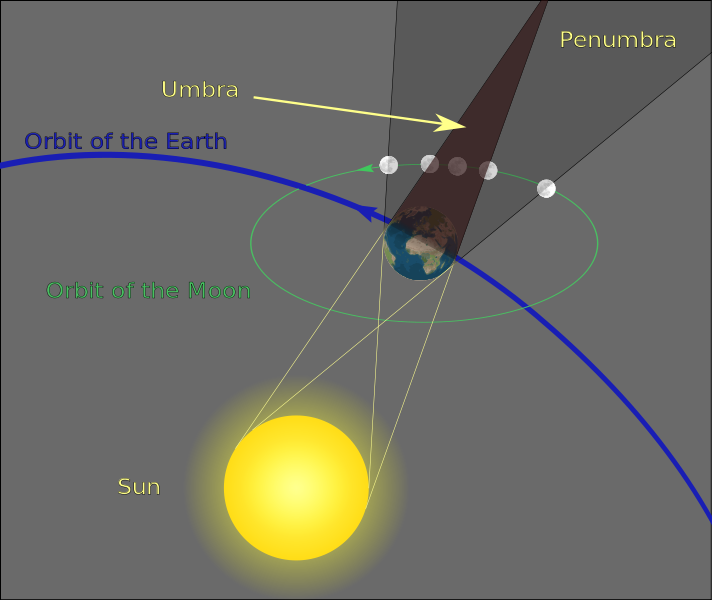
In any umbral lunar eclipse, the moon always passes through Earth’s very light penumbral shadow before and after its journey through the dark umbral shadow.
First Blue Moon total eclipse in 150 years? Well… It depends on where you live. Yes, we’ve seen the social media memes going around suggesting this is the first Blue Moon total eclipse in 150 years. But the meme is true only for time zones in and around the Americas, not for the rest of the world. The last time that we had a Blue Moon total lunar eclipse – reckoning in world time (UTC, or GMT) – was December 30, 1982.
Full moon: 1982 December 1 at 00:21 UTC
Full moon: 1982 December 30 at 11:33 UTC (total lunar eclipse)
That wasn’t a Blue Moon eclipse for the Americas, however. For us, the full moon previous to the total lunar eclipse fell on November 30 – not December 1.
Before that, there was a Blue Moon total lunar eclipse for the world’s Eastern Hemisphere (Asia, Indonesia, Australia and New Zealand) on December 30, 1963.
Full Moon: 1963 November 30 at 23:54 UTC
Full Moon: 1963 December 30 at 11:04 UTC (total lunar eclipse)
Okay, now, finally we get to it. Before that, in late March 1866, there was a Blue Moon total lunar eclipse for North and South American time zones. But this full moon was not a supermoon.
Full Moon: 1866 March 1 at 11:52 UTC
Full Moon: 1866 March 31 at 4:32 UTC (total lunar eclipse)
By the way, the next Blue Moon total lunar eclipse will happen on December 31, 2028.
Source: Moon Phases by Fred Espenak
Who will see a partial lunar eclipse? A partial lunar eclipse precedes the total eclipse by a little over one hour, and follows totality for a little over one hour.
So, from start to finish, the moon takes 3 hours and 23 minutes to totally cross Earth’s dark umbral shadow. Eastern North America can see beginning stages of the partial umbral eclipse low in the west before sunrise January 31, whereas portions of the Middle East and far-eastern Europe can view the ending stages of the partial umbral eclipse low in the east after sunset January 31. South America, most of Europe and Africa won’t be able see this eclipse. See worldwide map below.
Incidentally, a very light penumbral eclipse comes before and after the dark (umbral) stage of the lunar eclipse. But this sort of eclipse is so faint that many people won’t even notice it. The penumbral eclipse would be more fun to watch from the moon, where it would be seen as a partial eclipse of the sun.
Worldwide map of the 2018 January 31 total lunar eclipse

View larger. Need help with the above map, courtesy of EclipseWise.com? Every place in white sees the whole eclipse from start to finish, whereas every place in black misses out entirely. Let EclipseWise.com by the eclipse master Fred Espenak walk you through the Key to Lunar Eclipse Figures. See less complicated map below.
Day and night sides of Earth at greatest total eclipse

Day and night sides of Earth at greatest eclipse (13:30 UT). The shadow line at left, running through North America, depicts sunrise (moonset). The shadow line at right, running through far-eastern Europe and far-western Asia depicts sunset (moonrise). Image credit: Earth View
What causes a lunar eclipse? A lunar eclipse can only happen at full moon. Only then is it possible for the moon to be directly opposite the sun in our sky, and to pass into the Earth’s dark umbral shadow. Most of the time, however, the full moon eludes the Earth’s shadow by swinging to the north of it, or south of it. For instance, the last full moon on January 2, 2018, swung south of the Earth’s shadow. The next full moon – on March 2, 2018 – will swing north of the Earth’s shadow.
The moon’s orbital plane around Earth is actually inclined at 5 degrees to the ecliptic – Earth’s orbital plane around the sun. However, the moon’s orbit intersects the ecliptic at two points called nodes. It’s an ascending node where it crosses the Earth’s orbital plane going from south to north, and a descending node where it crosses the Earth’s orbital plane,going from north to south.
In short, a lunar eclipse happens when the full moon closely coincides with one of its nodes, and a solar eclipse happens when a new moon does likewise. It’s not a perfect alignment this time around, with the moon turning full about 5 hours before the moon crosses its ascending node. But that’s close enough for this full moon to stage a total lunar eclipse that lasts a touch more than one and 1/4 hours.
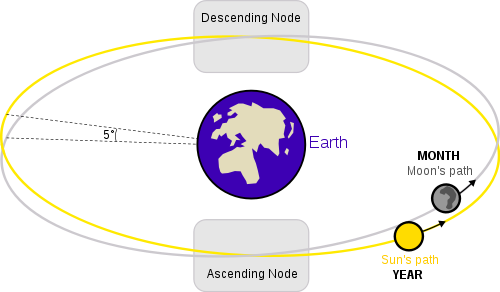
The yellow circle shows the sun’s apparent yearly path (the ecliptic) in front of the constellations of the Zodiac. The gray circle displays the monthly path of the moon in front of the zodiacal constellations. If a new moon or full moon aligns closely with one of the moon’s nodes, then an eclipse is in the works.

Time lapse of October 8, 2014, lunar eclipse as reflected in a pond in central Illinois, by Greg Lepper.
Bottom line: The super Blue Moon happens before sunrise on January 31, 2018, for North America and Hawaii. It happens after sunset on January 31 for the Middle East, Asia, Indonesia, Australia and New Zealand. Details here.
Need more details? Visit Fred Espenak’s page
EarthSky astronomy kits are perfect for beginners. Order today from the EarthSky store
Donate: Your support means the world to us
from EarthSky http://ift.tt/2BCJXjS

Total lunar eclipse photo, above, taken in 2004 by Fred Espenak
The Blue Moon – second of two full moons in one calendar month – will pass through the Earth’s shadow on January 31, 2018, to give us a total lunar eclipse. Totality, when the moon will be entirely inside the Earth’s dark umbral shadow, will last a bit more than one-and-a-quarter hours. The January 31 full moon is also the third in a series of three straight full moon supermoons – that is, super-close full moons. It’s the first of two Blue Moons in 2018. So it’s not just a total lunar eclipse, or a Blue Moon, or a supermoon. It’s all three … a super Blue Moon total eclipse!
Is it the first Blue Moon total eclipse in 150 years, as some social media memes are now claiming? It is … if you’re not considering the whole world, but only the Americas. More about that below.
How about supermoon total lunar eclipses? The last supermoon total lunar eclipse was in September 2015. And the last super Blue Moon total eclipse happened on December 30, 1982.
IMPORTANT. If you live in North America or the Hawaiian Islands, this lunar eclipse will be visible in your sky before sunrise on January 31.
On the other hand, if you live in the Middle East, Asia, Indonesia, Australia or New Zealand, this lunar eclipse will happen in the evening hours after sunset on January 31.
Follow the links below to learn eclipse times and more:
Eclipse times in Universal Time
Eclipse times for North American time zones
Eclipse calculators provide eclipse times for your sky
First Blue Moon total eclipse in 150 years? Well…
Who will see a partial lunar eclipse?
What causes a lunar eclipse?
January 31 is 1st of two Blue Moons in 2018
Eclipse times in Universal Time
Partial umbral eclipse begins: 11:48 Universal Time (UT)
Total eclipse begins: 12:52 UT
Greatest eclipse: 13:30 UT
Total eclipse ends: 14:08 UT
Partial umbral eclipse ends: 15:11 UT
How do I translate Universal Time to my time?
Eclipse times for North American time zones:
Eastern Standard Time (January 31, 2018)
Partial umbral eclipse begins: 6:48 a.m. EST
Moon sets before start of total eclipse
Central Standard Time (January 31, 2018)
Partial umbral eclipse begins: 5:48 a.m. CST
Total eclipse begins: 6:52 a.m. CST
Moon may set before totality ends
Mountain Standard Time (January 31, 2018)
Partial umbral eclipse begins: 4:48 a.m. MST
Total eclipse begins: 5:52 a.m. MST
Greatest eclipse: 6:30 a.m. MST
Total eclipse ends: 7:08 a.m. MST
Moon sets before end of partial umbral eclipse
Pacific Standard Time (January 31, 2018)
Partial umbral eclipse begins: 3:48 a.m. PST
Total eclipse begins: 4:52 a.m. PST
Greatest eclipse: 5:30 a.m. PST
Total eclipse ends: 6:08 a.m. PST
Partial umbral eclipse ends: 7:11 a.m. PST
Moon may set before end of partial umbral eclipse
Alaskan Standard Time (January 31, 2018)
Partial umbral eclipse begins: 2:48 a.m. AKST
Total eclipse begins: 3:52 a.m. AKST
Greatest eclipse: 4:30 a.m. AKST
Total eclipse ends: 5:08 a.m. AKST
Partial umbral eclipse ends: 6:11 a.m. AKST
Hawaii-Aleutian Standard Time (January 31, 2018)
Partial umbral eclipse begins: 1:48 a.m. HAST
Total eclipse begins: 2:52 a.m. HAST
Greatest eclipse: 3:30 a.m. HAST
Total eclipse ends: 4:08 a.m. HAST
Partial umbral eclipse ends: 5:11 a.m. HAST
Eclipse calculators provide eclipse times for your sky.
Remember … you have to be on the night side of Earth while the lunar eclipse is taking place to witness this great natural phenomenon. Of course, people around the globe want to know whether the eclipse is visible from their part of the world and at what time. To find out the local time of the greatest eclipse in your sky, click on this eclipse calculator and put in the name of a city near you. No time conversion is necessary for this eclipse calculator or the one below because the eclipse times are given in local time.
Eclipse computer via the US Naval Observatory

Animation of the 2018 January 31 total lunar eclipse. The moon travels eastward through the Earth’s penumbra (light outside shadow) and umbra (dark inner shadow). The yellow line depicts the ecliptic – Earth’s orbital plane. Although the moon, at least in part, spends a little over 3 1/3 hours within the umbra (dark shadow), it is only totally submerged in the umbra for about 1 1/4 hours.

In any umbral lunar eclipse, the moon always passes through Earth’s very light penumbral shadow before and after its journey through the dark umbral shadow.
First Blue Moon total eclipse in 150 years? Well… It depends on where you live. Yes, we’ve seen the social media memes going around suggesting this is the first Blue Moon total eclipse in 150 years. But the meme is true only for time zones in and around the Americas, not for the rest of the world. The last time that we had a Blue Moon total lunar eclipse – reckoning in world time (UTC, or GMT) – was December 30, 1982.
Full moon: 1982 December 1 at 00:21 UTC
Full moon: 1982 December 30 at 11:33 UTC (total lunar eclipse)
That wasn’t a Blue Moon eclipse for the Americas, however. For us, the full moon previous to the total lunar eclipse fell on November 30 – not December 1.
Before that, there was a Blue Moon total lunar eclipse for the world’s Eastern Hemisphere (Asia, Indonesia, Australia and New Zealand) on December 30, 1963.
Full Moon: 1963 November 30 at 23:54 UTC
Full Moon: 1963 December 30 at 11:04 UTC (total lunar eclipse)
Okay, now, finally we get to it. Before that, in late March 1866, there was a Blue Moon total lunar eclipse for North and South American time zones. But this full moon was not a supermoon.
Full Moon: 1866 March 1 at 11:52 UTC
Full Moon: 1866 March 31 at 4:32 UTC (total lunar eclipse)
By the way, the next Blue Moon total lunar eclipse will happen on December 31, 2028.
Source: Moon Phases by Fred Espenak
Who will see a partial lunar eclipse? A partial lunar eclipse precedes the total eclipse by a little over one hour, and follows totality for a little over one hour.
So, from start to finish, the moon takes 3 hours and 23 minutes to totally cross Earth’s dark umbral shadow. Eastern North America can see beginning stages of the partial umbral eclipse low in the west before sunrise January 31, whereas portions of the Middle East and far-eastern Europe can view the ending stages of the partial umbral eclipse low in the east after sunset January 31. South America, most of Europe and Africa won’t be able see this eclipse. See worldwide map below.
Incidentally, a very light penumbral eclipse comes before and after the dark (umbral) stage of the lunar eclipse. But this sort of eclipse is so faint that many people won’t even notice it. The penumbral eclipse would be more fun to watch from the moon, where it would be seen as a partial eclipse of the sun.
Worldwide map of the 2018 January 31 total lunar eclipse

View larger. Need help with the above map, courtesy of EclipseWise.com? Every place in white sees the whole eclipse from start to finish, whereas every place in black misses out entirely. Let EclipseWise.com by the eclipse master Fred Espenak walk you through the Key to Lunar Eclipse Figures. See less complicated map below.
Day and night sides of Earth at greatest total eclipse

Day and night sides of Earth at greatest eclipse (13:30 UT). The shadow line at left, running through North America, depicts sunrise (moonset). The shadow line at right, running through far-eastern Europe and far-western Asia depicts sunset (moonrise). Image credit: Earth View
What causes a lunar eclipse? A lunar eclipse can only happen at full moon. Only then is it possible for the moon to be directly opposite the sun in our sky, and to pass into the Earth’s dark umbral shadow. Most of the time, however, the full moon eludes the Earth’s shadow by swinging to the north of it, or south of it. For instance, the last full moon on January 2, 2018, swung south of the Earth’s shadow. The next full moon – on March 2, 2018 – will swing north of the Earth’s shadow.
The moon’s orbital plane around Earth is actually inclined at 5 degrees to the ecliptic – Earth’s orbital plane around the sun. However, the moon’s orbit intersects the ecliptic at two points called nodes. It’s an ascending node where it crosses the Earth’s orbital plane going from south to north, and a descending node where it crosses the Earth’s orbital plane,going from north to south.
In short, a lunar eclipse happens when the full moon closely coincides with one of its nodes, and a solar eclipse happens when a new moon does likewise. It’s not a perfect alignment this time around, with the moon turning full about 5 hours before the moon crosses its ascending node. But that’s close enough for this full moon to stage a total lunar eclipse that lasts a touch more than one and 1/4 hours.

The yellow circle shows the sun’s apparent yearly path (the ecliptic) in front of the constellations of the Zodiac. The gray circle displays the monthly path of the moon in front of the zodiacal constellations. If a new moon or full moon aligns closely with one of the moon’s nodes, then an eclipse is in the works.

Time lapse of October 8, 2014, lunar eclipse as reflected in a pond in central Illinois, by Greg Lepper.
Bottom line: The super Blue Moon happens before sunrise on January 31, 2018, for North America and Hawaii. It happens after sunset on January 31 for the Middle East, Asia, Indonesia, Australia and New Zealand. Details here.
Need more details? Visit Fred Espenak’s page
EarthSky astronomy kits are perfect for beginners. Order today from the EarthSky store
Donate: Your support means the world to us
from EarthSky http://ift.tt/2BCJXjS

